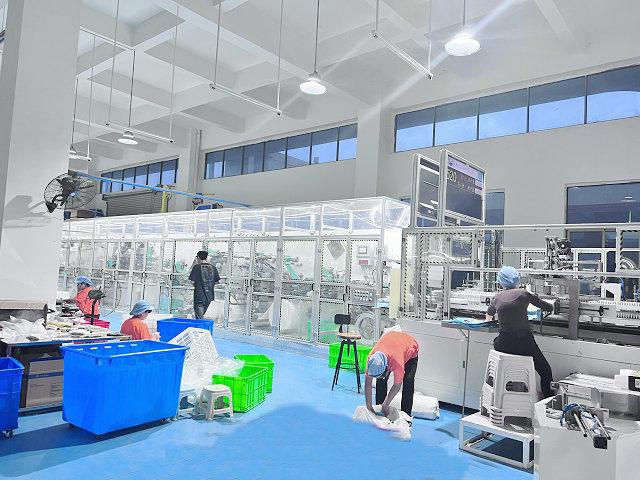Author:Haina Machinery Factory FROM:Diaper Machinery Manufacturer TIME:2025-01-04
Diaper processing in a machine is a complex yet fascinating topic that intersects the realms of manufacturing, waste management, and environmental sustainability. The time it takes to process a diaper in a machine can vary significantly based on several factors, including the type of machine used, the specific processes involved, and the materials from which the diapers are made. This article will explore the intricacies of diaper processing, examining how long it typically takes and what influences this duration.

To comprehend the processing time of diapers, it's essential to first understand what they are made of. Most disposable diapers consist of an outer layer, an absorbent core, and an inner lining. The absorbent core usually includes superabsorbent polymers (SAP), cellulose fluff, and other materials designed to trap moisture. Each of these components plays a role in how quickly and efficiently a diaper can be processed once it has been discarded. Machines need to be equipped to handle these diverse materials, which can affect processing speed. For instance, the presence of SAP can complicate recycling efforts due to its chemical composition.

There are various types of machines designed for diaper processing, each with its own processing capabilities and timelines. Some machines focus on shredding diapers into smaller pieces, while others are designed for separating materials or converting them into recyclable forms. The speed at which these machines operate can range widely. For example, a basic shredding machine might take a few minutes to process a batch of diapers, while more advanced machines equipped with sorting and recycling technologies may take considerably longer due to their complex operations.
Several factors influence how long it takes to process diapers in a machine. One major factor is the capacity of the machine. High-capacity machines are designed to handle larger volumes of diapers, which can streamline the processing time. Additionally, the type of processing method used—whether mechanical, thermal, or chemical—also impacts the duration. Mechanical processes, such as shredding, are generally quicker than thermal methods, which may involve drying or incinerating materials. Furthermore, the condition of the diapers, such as whether they are soiled or dry, can also affect processing efficiency.

On average, the processing time for diapers in industrial settings can range from 30 minutes to several hours. For instance, a simple shredding operation may take about 30 minutes to an hour for a standard load, depending on the machine's efficiency and the diaper's condition. However, if the process involves sorting and separating materials for recycling, it could extend to several hours. In facilities that focus on zero waste and sustainable practices, the entire lifecycle of processing— from collection to final output—can take up to 24 hours or more.
With increasing environmental concerns, innovations in diaper processing are becoming more prevalent. Newer technologies are being developed to reduce processing times and improve the efficiency of recycling efforts. For example, some companies are experimenting with enzymatic treatments that break down materials more rapidly than traditional methods. Others are implementing automated systems that streamline sorting and material separation, ultimately reducing the overall processing time. As these technologies advance, we can expect significant changes in how diapers are processed, leading to more sustainable outcomes.
The duration of diaper processing is not just a matter of efficiency; it also has significant implications for environmental sustainability. Longer processing times can lead to increased operational costs and greater energy consumption, which may result in a larger carbon footprint. Conversely, efficient processing methods that minimize time can contribute to lower energy usage and reduced waste generation. It is crucial for manufacturers and recycling facilities to find a balance between speed and sustainability to ensure that the environmental impact is minimized.
In summary, the time it takes to process a diaper in a machine varies widely based on several factors, including the machine type, diaper composition, and processing methods involved. While average processing times can range from 30 minutes to several hours, ongoing innovations in technology hold promise for reducing these durations and improving environmental sustainability. As the industry evolves, it is imperative for stakeholders to prioritize both efficiency and ecological responsibility, ensuring that diaper processing becomes a more sustainable practice for the future.
